Conceptual Origin of Today's Post
The idea for this post came from Stephanie Coggins who closely studies Riverdale through a camera lens as she walks her newly adopted dog, Dickie.


When I was in grade school we were already starting to wear woolens as the new school year began. For years, however, it has been clear that the weather is changing and the warm season lasts much longer. In fact, at a family bar mitzva in the first week of December 1982 it was so warm, that the family was sweating mightily in the clothes bought for the occasion where the expected temperature should have been frigid.
This year the weather changes are particularly striking. There has been an unusual amount of rain in September and October, the temperatures are unseasonably warm despite some cool nights, and the fall foliage changes have barely begun although it is now November (2021).
The natural order of plant growth is gradual move into dormancy in the fall, dormancy in the winter followed by plant growth, blooming and seed production in warmer weather. However, with relatively mild temperatures plus the occasional cold day or just cold evenings, plants are misreading the signals and responding as if it were spring.
Sightings in Riverdale
This fall things are somewhat different. The following plants have been sighted locally.
Henry Hudson Park presently has a blooming white dogwood –Cornus florida. Although this small native tree appears to have a four-petaled flower that can be either white or salmon-colored, the real flowers are the tiny central dots surrounded by the presumed petals. In the fall, the bright red fruits are colorful edibles for birds.
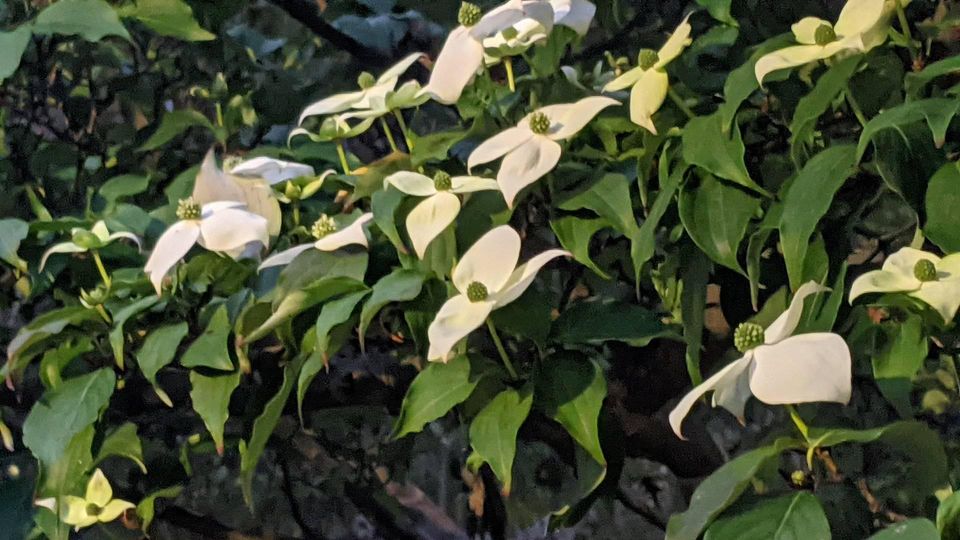
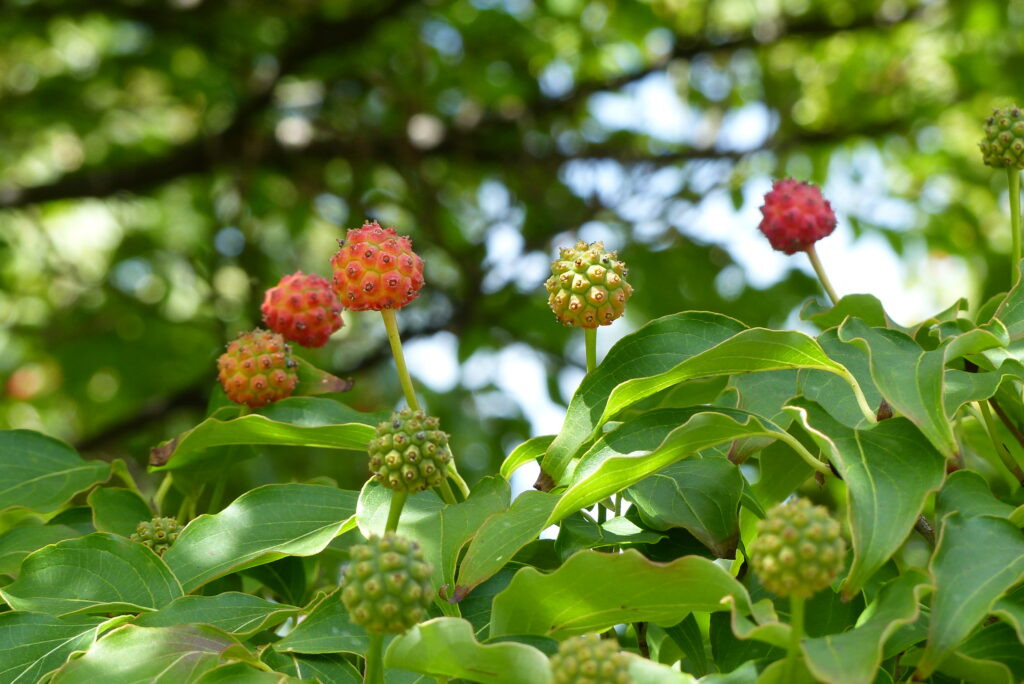
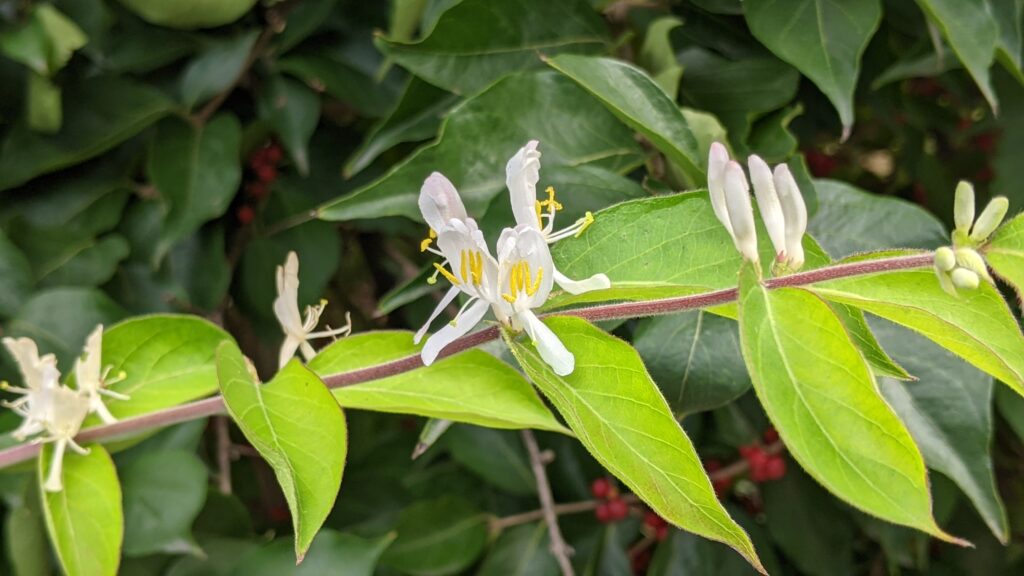
On the other side of Kappock Street and across from Henry Hudson Park, a honeysuckle (Morrow’s Honeysuckle- Lonicera morrowii), is in bloom. The scientific genus name is based on the German botanist Adam Lonicer’s name (1528-1586) and the species name derives from Dr. James Morrow (1820-1865). This is not a native plant, but was introduced from Japan by Dr. James Morrow in the 1860s. Morrow was a physician from South Carolina with interests in natural history who was able to join the 1852 voyage to Japan, led by Commodore Matthew Perry. His role was to collect seeds and plant specimens. Unfortunately, this plant has become invasive in several states.
In my garden, I have also been growing a sedge Carex morrowii which also honors James Morrow.
I had already noticed that one of my hydrangea has put out several new blue blooms. The standard hydrangea – not the more recently introduced everblooming type – blooms only once during the growing season and only on last year’s growth. That explains why an overly zealous pruning in one year can prevent the plant from blooming the following year. That does not mean that you cannot prune the shrub at all; it just means you have to be careful This video explains how to do it properly.
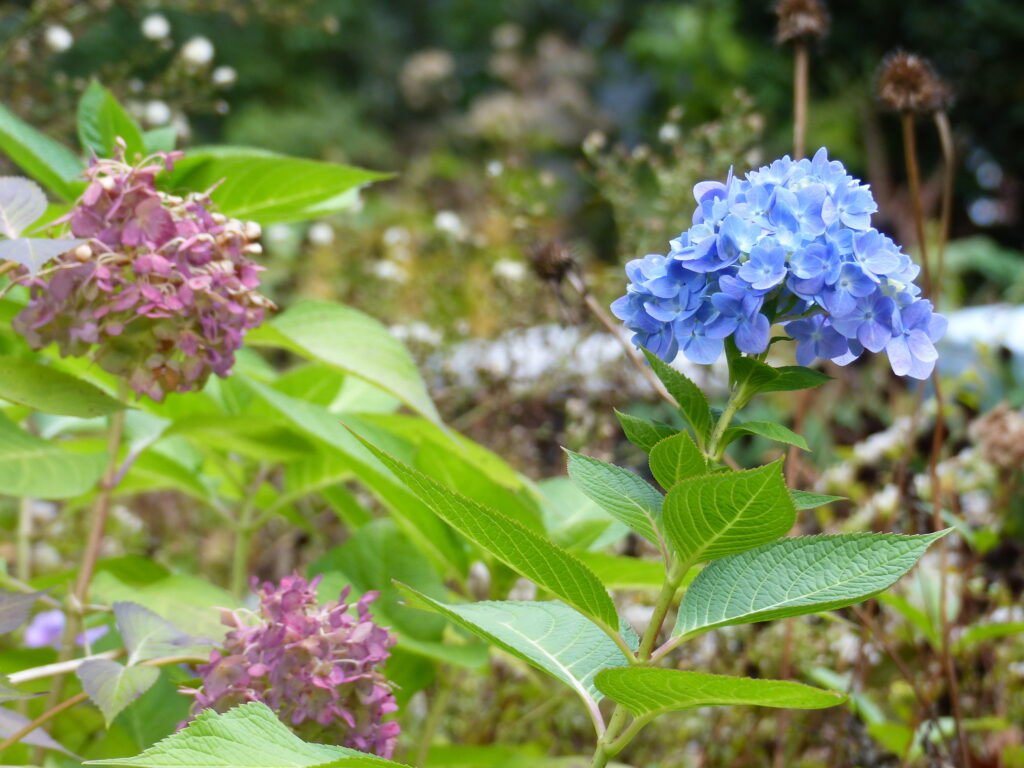
While hydrangeas blooms also come in white and green, the most common blooms run through either the red family spectrum or are blue. These colors are indicative of the soil pH. Acidic soil will have blue blooms while neutral or alkaline soil will cause them to be red. Soil chemistry can, however, be manipulated to achieve either alkaline or acidic conditions.
I was able to satisfy my curiosity about the default color of the hydrangea thanks to a personal communication with Henry Schreiber, Ph.D. who shared with me that the default color of the hydrangea is red.
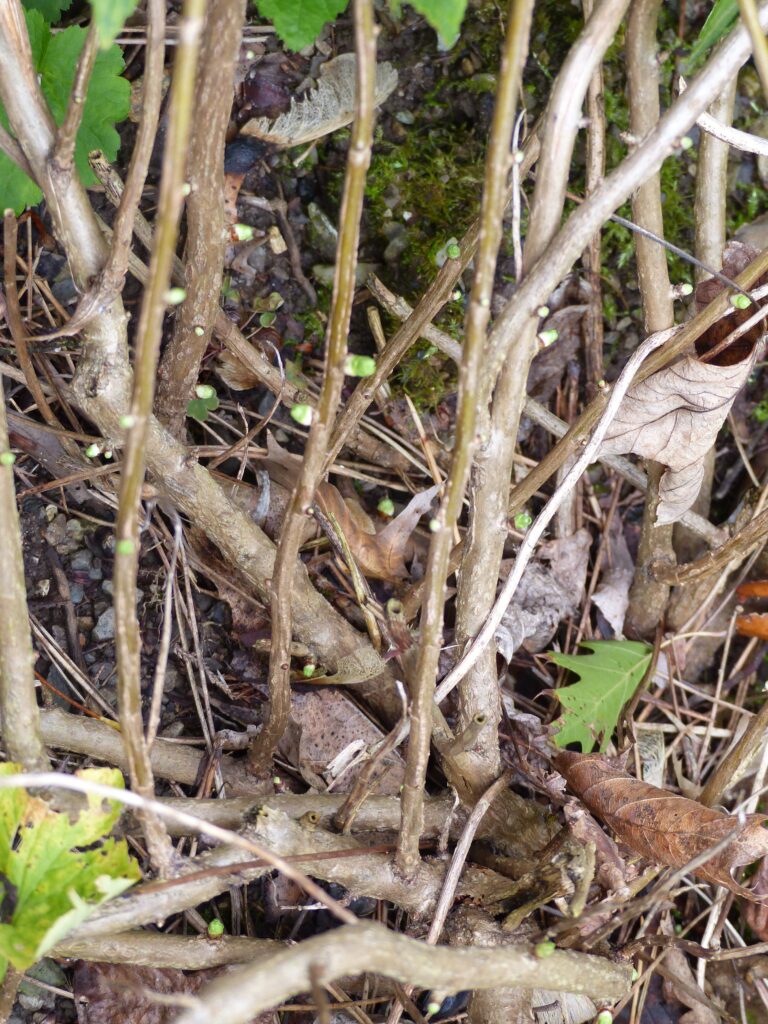
Finally, looking carefully at my Montauk Daisies (Nipponanthemum nipponicum – Family Asteraceae), I see that they are putting out new nubbins of growth on the stems. I am quite fond of this plant since it is a fall bloomer, is quite sturdy and is so easily propagated. To create new plants all I have to do in the spring is cut off some of the stems, stick them in soil-filled containers – 10 to a pot -, keep ‘em watered and transplant them when they have roots and the weather is cooperative.
Plants depend on many factors for their growth signals. One signal, in particular, is temperature fluctuations such as what we have been experiencing. There is a downside to the extra blooms that we have been having, however. Since many of the flower buds for the following year are set a few weeks after the normal bloom time, those are where the new blooms are coming from. Unfortunately, when spring does arrive next year in 2022, those buds will be gone.
Request of Readers
I am sure that the list of four plants that I have shared with you is not exhaustive. I would welcome other observations from my readers.
Hi Sura.
I’m not into rooting or planting yet but I enjoyed your blog including the photos.
I took a walk today and couldn’t believe that my friend and I saw a huge tract of irises in bloom!!!!
Yes I saw gorgeous bearded irises in Seton Park!
I have been educated that there are reblooming varieties of irises so it’s hard to know if any irises that may be in bloom at this time fit my thesis or not.